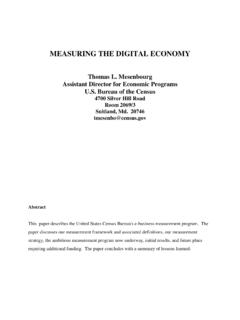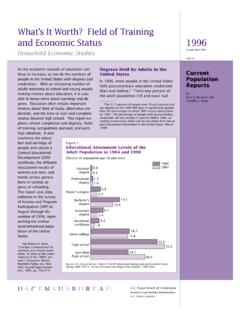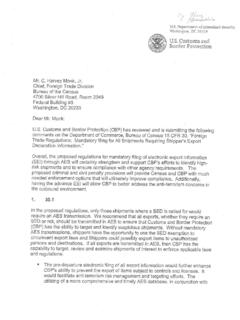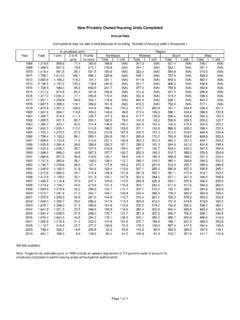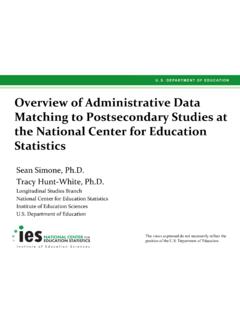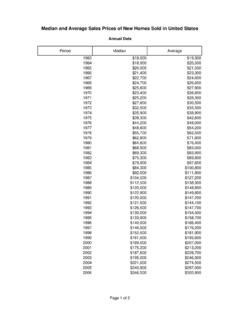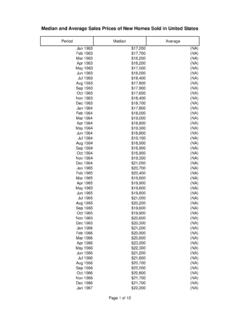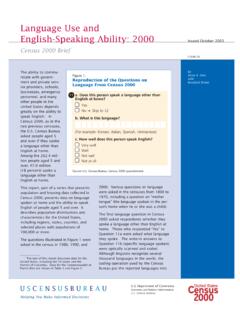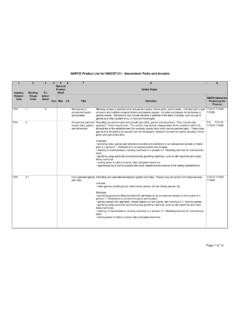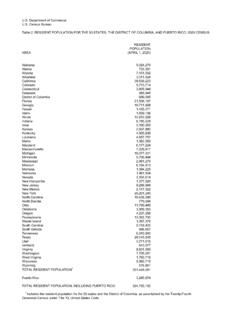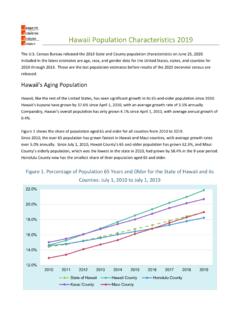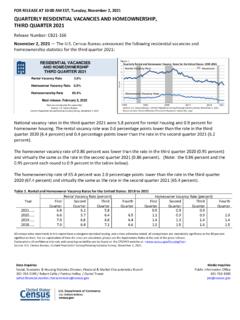Transcription of Demographic Turning Points for the United ... - Census.gov
1 Demographic Turning Points for the United S tates: Population Projections for 2020 to 2060 Population Estimates and ProjectionsCurrent Population ReportsBy Jonathan Vespa, Lauren Medina, and David M. ArmstrongP25-1144 Issued March 2018 Revised February 2020 INTRODUCTIONThe year 2030 marks a Demographic Turning point for the United States. Beginning that year, all baby boomers will be older than 65. This will expand the size of the older population so that one in every five Americans is projected to be retirement age (Figure 1). Later that decade, by 2034, we project that older adults will outnumber children for the first time in history. The year 2030 marks another Demographic first for the United States.
2 Beginning that year, because of population aging, immigration is projected to overtake natural increase (the excess of births over deaths) as the primary driver of population growth for the country. As the population ages, the number of deaths is projected to rise sub-stantially, which will slow the coun-try s natural growth. As a result, net international migration is projected to overtake natural increase, even as levels of migration are projected to remain relatively flat. These three Demographic mile-stones are expected to make the 2030s a transforma-tive decade for the population. Beyond 2030, the population is projected to grow slowly, to age considerably, and to become more racially and ethnically diverse.
3 Despite slowing popula-tion growth, particularly after 2030, the population is still expected to grow by 79 million people by 2060, crossing the 400-million threshold in 2058. This con-tinued growth sets the United States apart from other developed countries, whose populations are expected to barely increase or actually contract in coming decades. This report looks at these changes and sum-marizes results from the census Bureau s 2017 National Population Projections. It focuses on 2030 as a Demographic Turning point for the United States, but explores broader changes in the age, race, and ethnic composition of the population from 2020 to 2060. Projections of the Older Adult Population to By nearly one in four Americans is projected to be an older adult Source U S census Bureau National Population Projections Millions of people years and olderPercent of population 2 census BureauHIGHLIGHTS FROM THE 2017 NATIONAL POPULATION PROJECTIONSP opulation growth: The United States is projected to grow by nearly 79 million people in the next 4 decades, from about 326 million to 404 million between 2017 and 2060.
4 The population is pro-jected to cross the 400-million mark in 2058. The population is expected to grow by an average of million people per year between 2017 and 2060. The rate of population growth is slowing. Since 2010, the population has grown by about million people per year and it is projected to continue growing by the same annual rate until 2030. However, that rate is expected to fall to million per year between 2030 and 2040, and continue falling to million per year between 2040 and 2060. Beginning in 2030, net inter-national migration is expected to overtake natural increase as the driver of population growth in the United States because of population aging.
5 That year, the United States is projected to add 1 million people by natural increase (the number of births minus deaths) but million through net international migration. Because the number of deaths is projected to rise substan-tially, in 2060 the popula-tion is projected to add about 500,000 people by natural increase, whereas net interna-tional migration is expected to add more than twice that number million to the population. The population is projected to grow more from interna-tional migration than natural increase in coming decades because of population aging. As baby boomers age into older adulthood, the number of deaths is projected to rise faster than the number of births.
6 As a result, the popula-tion will naturally grow very slowly, leaving international migration to overtake natural increase as the leading cause of population growth, even as projected levels of migration remain relatively : America is graying. The nation s 65-and-older popu-lation is projected to nearly double in size in coming decades, from 49 million in 2016 to 95 million people in 2060. As a result, the share of people aged 65 and older will grow from about 15 percent in 2017 NATIONAL POPULATION PROJECTIONSThe results in this report are based on the 2017 National Population Projections, which are the third set of projections based on the 2010 census , and cover the period from 2017 to 2060.
7 This series updates the prior series released in 2014, which was the first to incorporate separate assumptions about the fertility of native- and foreign-born women living in the United States, since the latter tend to have higher fertility rates. The 2017 series extends that work to include separate assumptions about the mortality of native- and foreign-born people. For the first time, the national population projections account for the generally lower mortality rates and higher life expectancy of the foreign-born, which allows us to better project for the effects of international migration on the population of the United States. The 2017 series also includes projections of the racial and ethnic composition of chil-dren and older adults for the first time.
8 The 2017 National Population Projections include projections of the resident population by several Demographic traits, including age, sex, race, Hispanic origin, and nativity (whether people were born in the United States or in another country). They are based on the 2010 census and official population estimates through 2016. This series uses the cohort-component method, which projects the three components of population change fertility, mortality, and international migration separately for each birth cohort based on historical trends. The base population is advanced each year using projected survival rates and net international migration. New birth cohorts are added to the population by applying the annual pro-jected age-specific fertility rates to the female population.
9 For more information on the data and methodology, see the report on the 2017 National Population Projections: Methodology and Assumptions < /technical- >. census Bureau 32016 to nearly a quarter of the population in 2060. The number of people 85 years and older is expected to nearly double by 2035 (from million to million) and nearly triple by 2060 (to 19 million people).Race and ethnicity: The non-Hispanic White population is projected to shrink over coming decades, from 199 million in 2020 to 179 million people in 2060 even as the population continues to grow. Their decline is driven by falling birth rates and rising number of deaths over time as the non-Hispanic White popula-tion ages.
10 In comparison, the White population, regardless of Hispanic origin, is projected to grow from 253 million to 275 million over the same period. The population of people who are Two or More Races is projected to be the fastest-growing racial or ethnic group over the next several decades, followed by Asians and Hispanics. The causes of their growth are different, however. For Hispanics and people who are Two or More Races, high growth rates are largely the result of high rates of natural increase, given the relatively young age structure of these populations. For Asians, the driving force behind their growth is high net interna-tional foreign-born: The nation s foreign-born pop-ulation is projected to rise from 44 million people in 2016 to 69 million in 2060, growing from HOW DO POPULATIONS GROW?
